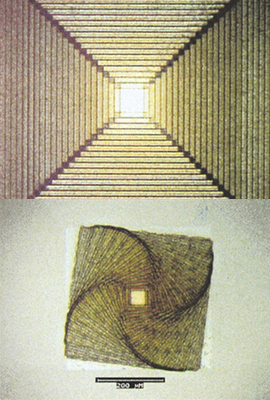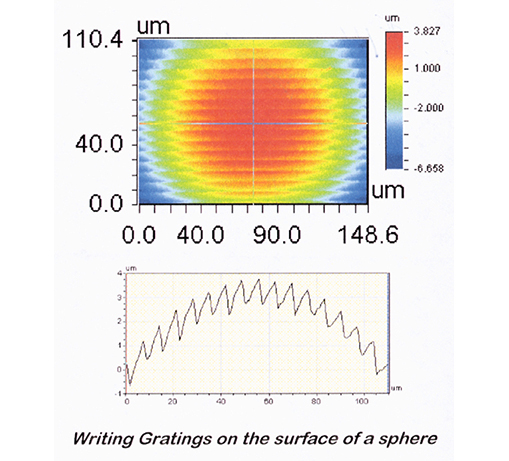Optical Micromachining
Rapid fabrication of optical elements has been demonstrated using laser micromachining.
Potomac Photonics, Inc., Lanham, Maryland, is a manufacturer of ultraviolet excimer lasers and precision laser micromachining workstations. The company's forte in these areas, and its ability to develop and commercialize laser and micromachining technology has been aided by NASA Small Business Innovation Research (SBIR) awards.
Marshall Space Flight Center endowed Potomac Photonics with an SBIR award to construct and demonstrate a unique tool that fills a need in the area of prototyping diffractive and refractive micro-optics. This tool is an integrated computer-aided design and computer-aided micromachining workstation that extends the abilities of optical designers on a scale not before possible.
With a single computer-based system, an engineer is able to design, optimize, manufacture, measure, and refine optical elements of arbitrary structure on virtually any two-dimension or three-dimension surface. At the same time, the simplicity and affordability of this tool places it within the reach of many designers and fabrication specialists of optical components. Many in the optical design industry are now unable to exploit diffractive elements in their projects due to the staggering development costs associated with conventional microlithographic methods.
Advances in semiconductor processing techniques have made diffractive optical elements a viable alternative for many applications. However, standard fabrication methods are complex, expensive, and time consuming. Thus, there has been considerable effort in the development of fabrication techniques that are better suited for prototyping and quick turnaround. Some approaches to inexpensive fabrication of diffractive optical elements include the use of desktop publishing software and commercial imagesetters, direct-write laser exposure of photoresist, and production of gray level masks.
By way of NASA SBIR funds, Potomac Photonics began examining excimer laser use to directly ablate surface relief into polymer and glass materials for the production of diffractive and micro-optical components. Ultraviolet laser ablation allows for controlled material removal rates and surface finishes of optical quality. When compared to other techniques, ultraviolet laser ablation is advantageous in the reduced number of processing steps required for fabrication.
The method prompted by Potomac Photonics research makes use of a compact, high repetition rate pulsed excimer laser integrated into a workstation that is suitable for fabrication of diffractive optical elements. This system allows the user to design, fabricate, and refine the diffractive structure. Practical diffractive optical elements can be produced in minutes to hours. That is a fraction of the time typically required by more conventional microfabrication techniques.
This advancement is likely to dovetail nicely with the commercialization of other products at Potomac Photonics. Commercialization efforts have been rewarded by strong growth since its founding in 1982. Employee growth is an indicator of the company's business in excimer lasers and micromachining technology. Today, the bulk of its business is the sale of turnkey laser micromachining systems, with units now all over the world. These workstations use laser ablation to fashion micron-scale structures directly into the substrate material. The applications span a wide array of functions, from dicing and hole-drilling in flex circuits to customizing high-technology medical devices.
Potomac Photonics considers the rapid fabrication technology to have a number of immediate applications, including sensors and monitoring equipment, analytical instruments, fiber optic distribution and communication, neural networks and optical computing, lasers and laser instrumentation, pattern recognition, displays, and information storage.

Micromachining of optical components can be an effortless task using excimer laser technology. A new system under development cuts production costs and offers faster fabrication times over conventional micromachining techniques.

Rapid fabrication of optical elements can be accomplished using laser ablation controlled from a workstation.













